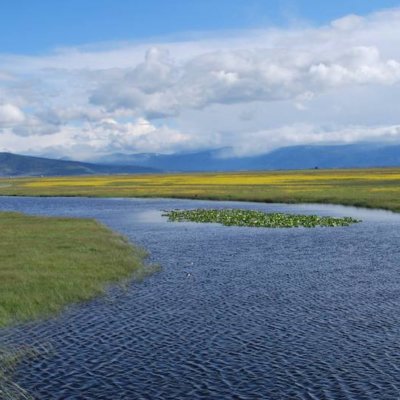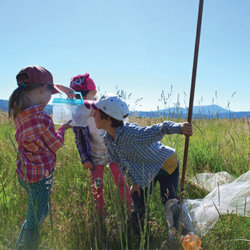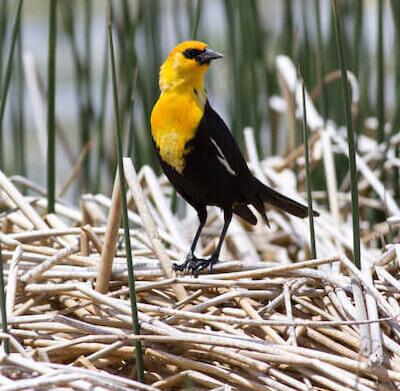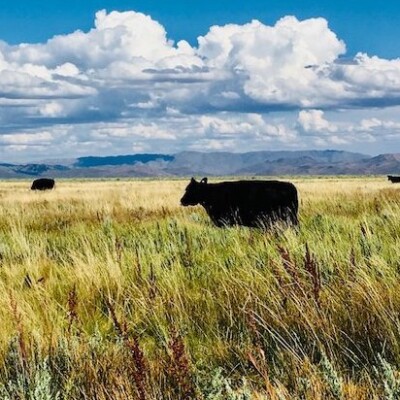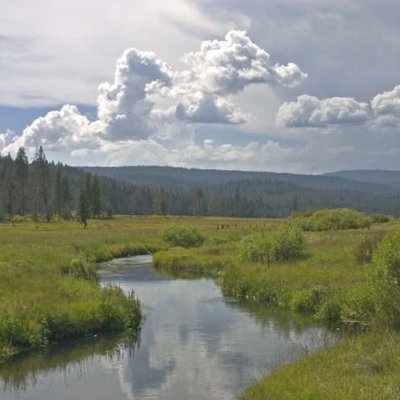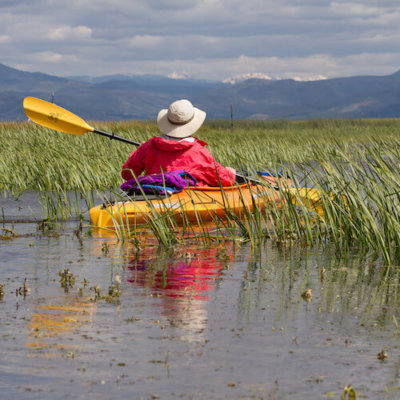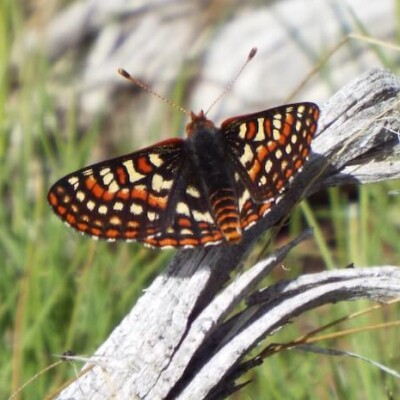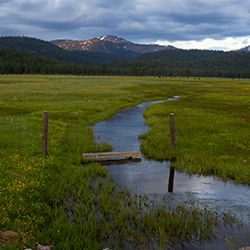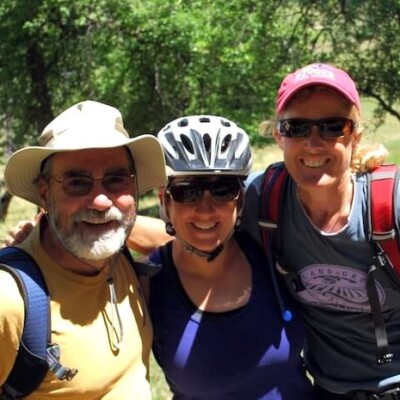Protecting what we love in the Feather River Country
The Feather River Land Trust protects critical headwaters and habitats for thousands of wildlife and plant species in the Sierra Nevada’s largest watershed—a source of drinking water for 27 million people. Since 2000, FRLT has protected over 100,000 acres of ecologically and culturally important landscapes in the Feather River Watershed.
What We Do
Conserving private lands for water, wildlife, and people
Together with visionary landowners, we’re protecting priority private lands for fresh water, wildlife, working ranches, outdoor classrooms, and community spaces where people from all walks of life can cultivate a love of place. Our knowledgeable team works on the ground with experts, partners, and communities to ensure important ecosystems remain intact.
Land Conservation
Protecting priority lands forever
As a nationally accredited land trust, we’re experts in conserving lands forever. Our diverse partnerships—from local landowners and Maidu communities to state and federal agencies—make us effective at permanently protecting crucial lands and water resources at a landscape scale.
Photo by Colby Elliott
Conservation easementsPrivate lands for the public good
Conservation easements are voluntary legal agreements between landowners and the land trust to permanently protect their land and limit development.
Lands we ownPreserves for wildlife and people
We purchase land when we want to ensure community access to a beloved place and conserve unique wildlife habitats and cultural resources.
Land Management
Caring for conserved lands
Once land is protected, our Land Stewardship Program works to manage, restore, and enhance its natural and cultural resources, now and for future generations. We work with community partners, local ranchers, and Maidu traditional stewardship practitioners to manage lands so that people, plants, and wildlife can thrive.
Kids in Nature
Growing the next generation of land stewards
If you’re like us, you love nature today because of time spent outdoors and the wild places you explored as a child. Learning Landscapes is FRLT’s conservation and education program designed to facilitate this nature-kid connection throughout the school year with place-based learning and hands-on stewardship experiences.
Photo by Karen Kleven
Native Homelands
Protecting a timeless relationship to land
We’re located in Mountain Maidu and Washoe homelands. We work with Indigenous partners to protect culturally significant lands—and people’s relationship to them—and restore traditional practices to the land.
Current Initiatives
Vision Campaign
We’re on a campaign to conserve 120,000 acres of Feather River headwaters and globally unique wetlands, meadows, and forests for current and future generations.
A new Nature Center at the Sierra Valley Preserve
A new Nature Center at the Sierra Valley Preserve is now open, where visitors and locals alike can experience the wonders of Sierra Valley and deepen our understanding of the natural world and our place in it.
Fire Recovery & Restoration in the Feather River Watershed
We've created an Emergency Fire Response Initiative—a 3-year effort that changes the way we do business in light of climate-driven megafires. Learn more about our plan that's already underway.
Protecting PG&E Headwater Lands
We worked with PG&E and Maidu Summit Consortium to protect 43,000+ acres of important Maidu homelands, headwaters, and habitats for public benefit.
Sierra Valley Conservation Partnership
We’re conserving working family ranches in Sierra Valley, which hold the Sierra Nevada’s largest wetlands and montane meadows and sustain incredible biodiversity.
Connect with us
Sign up to get updates from FRLT!
By submitting this form, you are consenting to receive marketing emails from: Feather River Land Trust, P.O. Box 1826, Quincy, CA, 95971, http://www.frlt.org. You can revoke your consent to receive emails at any time by using the SafeUnsubscribe® link, found at the bottom of every email. Emails are serviced by Constant Contact
Where We Work
The Sierra Nevada’s largest watershed
From Lassen Peak in the northwest to Sierra Valley in the southeast, the Feather River Watershed spans 2.3 million acres. Even more biodiverse than Yellowstone or Yosemite national parks, the Feather River Watershed is a nationally recognized hotspot for wildlife conservation. Mountain meadows and forests sustain wildlife and rural communities and while majestic peaks and wild rivers offer exceptional recreation. The Feather River Watershed provides clean water for 27 million people downstream.
2.3 million acres
the same size as Yellowstone National Park
27 million people
receive water for drinking, agriculture, and power
2,200
plant species—1/3 of California's plant diversity
38
rare or threatened wildlife species
75%
of wildlife species in the Sierra Nevada
The Feather River Watershed
We’re working with private landowners to conserve priority lands in three regions across the watershed: Lake Almanor, Spanish & Indian Creeks, and Sierra Valley.
click to enlarge to watershed scale >
The Feather River Watershed
Lake Almanor Region
Holds the headwaters of the North Fork Feather River—the watershed’s largest source of water
Spanish & Indian Creeks Region
Cold water tributaries and wet meadows feed the East Branch of the North Fork Feather River
Sierra Valley Region
The Sierra Nevada's largest wetlands form the headwaters of the Middle Fork Feather River—a Wild and Scenic River
Lake Almanor Region
Headwaters of the North Fork Feather River
The Lake Almanor Region holds the headwaters of the North Fork Feather River—the watershed’s largest source of water. Where the Cascade Range meets the Sierra Nevada, large wet meadows, waterways, and forests sustain high densities of threatened and endangered birds, native trout fisheries, and migration corridors for rare and threatened mammals like Sierra Nevada Red Fox, Rocky Mountain Elk, and Pacific Fishers.
We’re conserving beloved community places and 43,000+ acres of PG&E-owned headwater lands, including a historic return of Maidu homelands.
At a Glance
Conservation Focus
Water, Wildlife, Native Homelands, and Recreation
Fast Facts
- Audubon Important Bird Area with California's highest density of breeding Western Grebes + Yellow Warblers
- ⅓ of Sierra Nevada’s endangered Willow Flycatchers
- Home to one of CA's Gray Wolf packs
- Public Preserves: Olsen Barn Meadow, Mountain Meadows Gateway
- 50,000+ acres conserved to date
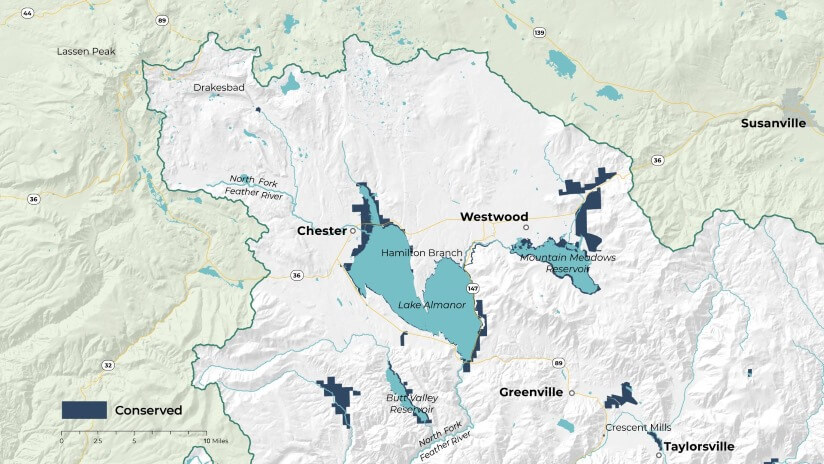
Lake Almanor Region Properties Conserved
Lake Almanor
Conservation FocusOlsen Barn Meadow
Conservation FocusHome Ranch
Conservation FocusTásmam Koyóm (Humbug Valley)
Conservation FocusButt Valley Reservoir
Conservation FocusMountain Meadows Reservoir
Conservation FocusMountain Meadows Gateway Preserve
Conservation FocusMaidu Wetlands
Conservation FocusMaidu Forest
Conservation FocusMaidu Trail
Conservation Focus101 Ranch
Conservation FocusWarner Valley
Conservation FocusMaidu Cemetery
Conservation FocusSpanish & Indian Creeks Region
Tributaries to the North Fork Feather River
In the heart of the watershed flow important cold-water tributaries to the East Branch of the North Fork Feather River. Large intermountain valleys filled with wet meadows, streams, and agricultural grasslands are rimmed with oak and conifer forests and rocky peaks, creating biodiverse habitats for rare plants, native fish, and diverse wildlife like Sandhill Cranes, Yellow-breasted Chats, Mountain Lions, and River Otters.
We’re working with ranching families and Maidu partners to conserve biodiverse habitats and sustain traditional relationships to land.
At a Glance
Conservation Focus
Cold Streams, Wet Meadows, and Maidu Homelands
Fast Facts
- Black Oak woodlands: biodiverse and culturally important
- 29 rare or threatened species at Heart K Ranch
- Robust native Rainbow and Brown trout fisheries
- Ag lands and forests that sustain rural livelihoods
- Public Preserves: Heart K Ranch, Leonhardt Ranch
- 4,131 acres conserved to date
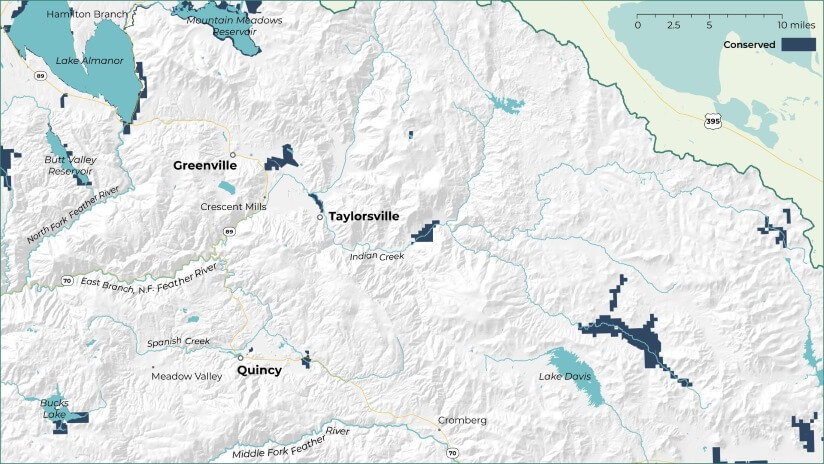
Spanish & Indian Creeks Properties Conserved
Bucks Lake
Conservation FocusWolf Creek Ranch
Conservation FocusHeart K Ranch
Conservation FocusLeonhardt Ranch Learning Landscape
Conservation FocusRogers Key Brand Ranch
Conservation FocusPearce Family Ranch
Conservation FocusSierra Valley Region
Headwaters of the Middle Fork Feather River
At 120,000 acres, Sierra Valley rivals Lake Tahoe in size and beauty. Its wetlands—the Sierra Nevada’s largest—form the headwaters of the Middle Fork Feather River, a Wild and Scenic River. A biodiversity hotspot, the valley supports the Sierra’s greatest diversity and abundance of birds, like White-faced Ibis and Yellow-headed Blackbirds, and migration corridors for mammals like Pronghorn, Mule Deer, and American Badger.
To date, FRLT and other conservation groups have worked with ranching families to protect 40,000+ acres, with multiple conservation easements in progress.
At a Glance
Conservation Focus
Wetlands, Birds, Agriculture, and Wild River Headwaters
Fast Facts
- Designated Audubon Important Bird Area with 230+ bird species—including 17 rare or threatened species
- Largest wetlands in the Sierra Nevada
- Biodiverse ag lands sustain wildlife and rural livelihoods
- Nearly 1,200 plant species
- Public Preserves: Sierra Valley Preserve
- 40,000+ acres conserved to date
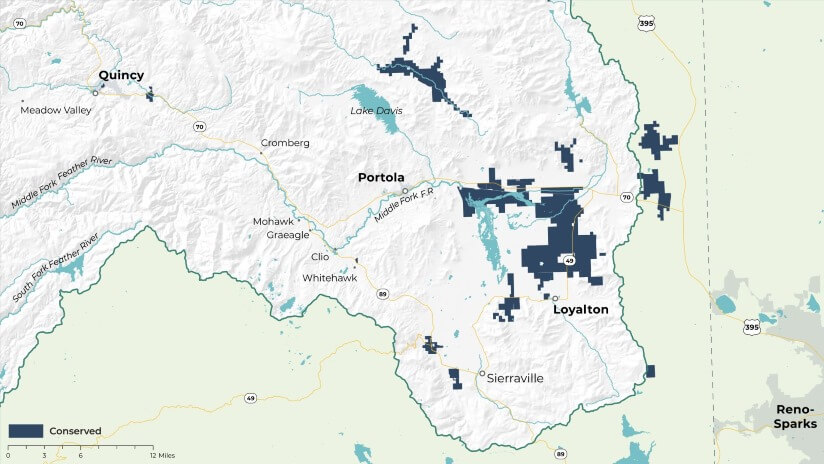
Sierra Valley Properties Conserved
Sierra Valley Preserve
Conservation FocusSpring Creek Ranch
Conservation FocusHollitz Ranch
Conservation FocusChurch Ranch
Conservation FocusSierra Valley Farms
Conservation FocusLoyalton Learning Landscape
Conservation FocusDiamond G Ranch Phase 1
Conservation FocusPotter 8 Ranch
Conservation FocusHill Ranch
Conservation FocusPuma Robles Ranch
Conservation FocusGenasci Ranch
Conservation FocusBates Ranch
Conservation FocusDiamond G Ranch Phase 2
Conservation FocusTrosi Canyon Ranch
Conservation FocusBalderston Ranch
Conservation FocusHarris Ranch
Conservation FocusEvery acre we conserve begins with you
A gift today creates a ripple of benefits for generations to come.
Why We Do It
We all have a stake in a healthy future
From water to wildlife we’re conserving the places you love, now and for future generations.
